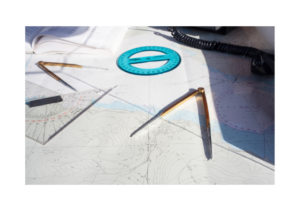Jul 30, 2021Best Initial Chart of Accounts
As you structure your company’s initial chart of accounts, it can be difficult to know where to start. Each industry is slightly different, necessitating a custom chart of accounts for each business. However, all useful charts have a few characteristics in common. They are easy to understand, well-organized, simple, and comprehensive. Although we won’t offer specific counsel on how to organize your chart of accounts in this article, we’ll give you a flavor for what a great chart of accounts looks like. Below we’ve listed a list of accounts that can serve as a framework when you are building your own. You’ll notice categories of assets, liabilities, and equity, as well as expense accounts. If you’re in the process of building or reassessing your chart of accounts, use this as a baseline to see if you have everything you need.
Cash Accounts
Bank Checking Account
Bank Savings Account
Merchant Account
Current Asset Accounts
Accounts Receivable
Allowance for Bad Debts
Prepaid Expenses
Inventory
Asset Accounts
Furniture & Equipment
Computer Equipment
Accumulated Depreciation
Intangible Assets
Accumulated Amortization
Other Assets
Current Liabilities
Accounts Payable
Credit Card
Payroll Liabilities
Benefits Payable
Sales Tax Payable
Unearned Revenue
Liabilities
Long-term liabilities
Equity
Cash Contributions
Non-cash Contributions
Owner's draws
Retained Earnings
Partner A Capital
Partner A Contributions
Partner A Distributions
Partner A Retained Earnings
Partner B Capital
Partner B Contributions
Partner B Distributions
Partner B Retained Earnings
Retained Earnings
Capital Stock
Additional paid-in capital
Owner Distribution
Retained Earnings
Revenue
Sales
Returns, Discounts and Allowances
Other Revenue
Other Income
Interest Income
Expenses
Cost of Goods Sold
Advertising and Promotion
Automobile
Bank Fees
Dues and Subscriptions
Insurance
Janitorial
Legal and Professional Fees
Meals - 50% Deductible
Meals - 100% Deductible
Entertainment (nondeductible)
Office Expenses
Supplies
Postage
Printing
Rent
Repairs and Maintenance
Research & Development
Taxes and Licenses
Penalties & Fines
Telephone
Travel
Utilities
Charitable Contributions
Training
Salaries and Wages
Commissions
Contract Labor
Employee Benefit Programs
Pension, Profit-Sharing, etc., Plans
Guaranteed Payments
Payroll taxes
Payroll Processing Fees
Other expenses
Gain/loss on Asset Disposal
Bad Debt Expense
Depreciation Expense
Amortization Expense
Interest Expense
Creating Industry-Specific Chart of Accounts
Even though two industries may share many resemblances, they may still have an entirely different chart of accounts. For example, real estate development, construction, and home repair companies all deal with home ownership, but require different forms of tracking the financials. If all companies had the same income and expenses, we’d only need one chart of accounts that would work for everyone. However, each business and industry is unique. To start building your own chart of accounts, it can be helpful to use an online service like Quickbooks to automatically assess what accounts you may need to open. Beyond that, a qualified accountant can help you examine and organize your books according to your circumstance and industry. The chart of accounts is a helpful tool when the back end work is invested









